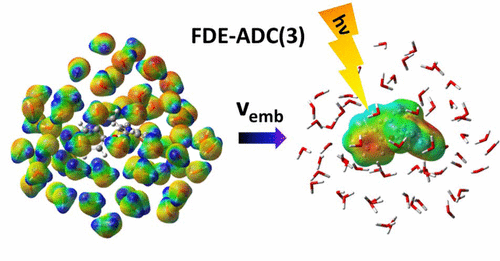-
Implementation and Application of the Frozen Density Embedding Theory with the Algebraic Diagrammatic Construction Scheme for the Polarization Propagator up to Third Order
S. Prager, A. Zech, T.A. Wesolowski and A. Dreuw
Journal of Chemical Theory and Computation, 13 (10) (2017), p4711-4725


DOI:10.1021/acs.jctc.7b00461 | unige:98053 | Abstract | Article HTML | Article PDF | Supporting Info

Implementation, benchmarking, and representative applications of the new FDE-ADC(3) method for describing environmental effects on excited states as a combination of frozen density embedding (FDE) and the algebraic-diagrammatic construction scheme for the polarization propagator of third order (ADC(3)) are presented. Results of FDE-ADC(3) calculations are validated with respect to supersystem calculations on test systems with varying molecule–environment interaction strengths from dispersion up to multiple hydrogen bonds. The overall deviation compared to the supersystem calculations is as small as 0.029 eV for excitation energies, which is even smaller than the intrinsic error of ADC(3). The dependence of the accuracy on the choice of method and functional for the calculation of the environment and the nonelectrostatic part of the system–environment interaction is evaluated. In three representative examples, the FDE-ADC method is applied to investigate larger systems and to analyze excited state properties using visualization of embedded densities and orbitals.
